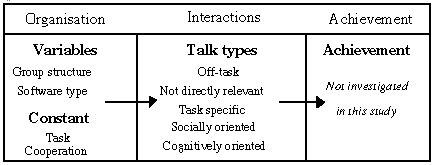
Figure 1: Conceptual framework for investigating verbal interactions
(after Webb, 1982)
Whilst cooperative group learning using computers undoubtedly encourages students' verbal interactions, few studies have focused upon the nature of these interactions. Researchers have suggested there is a need to know how students interact with each other (Crook, 1990; Hooper, 1992; Hooper & Hannafin, 1991; Johnson & Johnson, 1986; King, 1989; Light & Mevarech, 1992), particularly in relation to group structures, tasks and software types. This study was undertaken to investigate the verbal interactions of students when working in both homogeneous and heterogeneous cooperative groups using simulation and word processing software. It was found that the largest element of students' talk when working in cooperative groups of either structure (homogeneous or heterogeneous) was cognitively oriented; that students situated in homogeneous groups are likely to produce more socially oriented talk than those in heterogeneous groups; that students working with word processing rather than simulation software are likely to produce more socially oriented and off-task talk; and those using simulation software are more likely to use talk indicative of higher-order cognitive processing. In general, this study found that task, software and to a lesser extent, group structure, influenced the interactions of students working in cooperative groups for CAL.
Significant amounts of research have been done into small group learning, although there has been rather less investigating verbal interactions within groups (Hooper & Hannafin, 1988; Johnson, Johnson, & Maruyama, 1983; Johnson, Johnson, & Stanne, 1985; Webb, Ender, & Lewis, 1986). The greater proportion of small group learning research has been in non-computing environments (Peterson, Janicki, & Swing, 1981; Swing & Peterson, 1982; Webb, 1982). The research reported here is aimed at enriching our understanding of the verbal interactions of young children within groups when working on computer based activities.
Simulation and word processing software are chosen by many teachers as the focus for computer-based learning and at least one major evaluation of computer use in primary and high schools lists these software amongst the most frequently applied (Watson, 1993). For these reasons, simulation and word processing software have been chosen as the focus for this study.
The majority of research studies suggest that the verbal interactions of students working in cooperative group CAL environments are similar to those of students in non-computer settings, with high levels of on-task talk (Bennett & Dunne, 1991; Carrier & Sales, 1987; Signer, 1992). However, whilst cooperative group learning using computers undoubtedly encourages verbal interactions, there remains a need to know more about what characterises these interactions.

Figure 1: Conceptual framework for investigating verbal interactions
(after Webb, 1982)
Groups of three were used for both heterogeneous and homogeneous groupings, allowing for the concerns, in particular, of Johnson & Johnson, who suggest that an optimum group size is between two and four students(Johnson & Johnson, 1986). The software chosen for the study was simulation and word processing, for reasons described above. Both software types also allow for cooperative behaviours to be planned for, particularly in designing task structures (such as common rewards).
The most significant aspects of students' group verbal interactions relate to the tasks being undertaken. Socially oriented talk helps promote the working relationship and cooperation of the students who are working together (Sigel & Cocking, 1977). Cognitive talk, relevant to the task, is taken to be the expressing of thinking processes employed in order to achieve an outcome. In this study, off-task talk has been separated from on-task talk; and on-task talk is categorised into socially oriented talk, cognitively oriented talk, and not directly relevant talk, which although necessary to the task, does not directly affect outcomes. Cognitively oriented talk is further categorised into types of talk, after Tough (1976), (see Figure 2).

Figure 2: Analysis of talk types.
After Bennett and Dunne, (1991), and Tough, (1976)
| Group Structure | Software Type | |
|---|---|---|
| Homogeneous (Ability) | Word processing | Simulation |
| Heterogeneous (Ability) | Word processing | Simulation |
The students had only limited access to the class computer before this study, and only working independently or in heterogeneously structured groups of four to five students, each group receiving approximately one hour of computer usage every seven school days. Fifty percent of the students in the study had access to a computer in their home, (i.e., six out of the 12 students). The students had all experienced non-computer based and informal group work involving various discussion tasks. Their teacher had drawn work from the Oral Language Developmental Continuum (Evans, 1994) in teaching the students to role play. On the advice of the teacher, it was expected that all the students would respond well to working in groups.
Students' talk was analysed according to the talk types identified (Figure 2). Talk was recorded using an audio tape recorder and transcripts made to facilitate analysis; a frequency grid of verbal interactions was used for data collection. One session per group for each software type was taped for a maximum of 30 minutes. This involved a total of eight recording sessions, i.e., each group was recorded when working with the simulation and with the word processing software.
A pilot study was conducted to establish the length of time necessary to collect sufficient talk for analysis; this indicated one session of 20 minutes would be sufficient to generate necessary data. (Extensive samples of talk collected showed that the quantity of students' talk did not increase greatly with time and thus, it seemed unnecessary to tape more than one session). The inter-rater reliability was established at the pilot stage, at 0.93 over 10 minutes of talk involving 160 utterances of significance.
| J: | We should have 100 [crew], because then .... |
| K: | No, because if we have 100 [crew] it would weigh the ship down more. So if ... and if we have 30 it will float. |
| L: | If it were lighter it won't touch it [reef]. |
| K: | Yes, so it will skim over the reef. |
| L: | So 30. |
| J: | So if we hit a reef it will probably ... |
| K: | ... crack down ... |
| J: | Yes, crack down. |
| K: | ... if we have a hundred, but if we had 30 it might just sail right over it. |
| J: | Yes and ... and because it's small. And then in storms it will be light. |
Following the analysis of conversation blocks or chunks, the talk was then analysed according to each speaker's significant utterances. This involved attributing each student's turn at talk as a significant utterance (Halliday, 1988). In cases where it was difficult to place talk within a single classification, as utterances sometimes fell into more than one category, the talk was placed according to its most complex aspect (Tough, 1976).
The analysis of all talk is presented in terms of talk type frequencies for a 20 minute session with graphs constructed to show relative frequencies of types of talk for each group, and for each software type. Two-way ANOVAs were used to test for any significant difference in talk between the two group types (heterogeneous and homogeneous) and between the two software types (simulation and word processing). Because of the large number of F-values calculated (24 in total) alpha was set conservatively at 0.01 instead of 0.05.
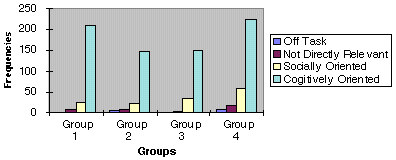
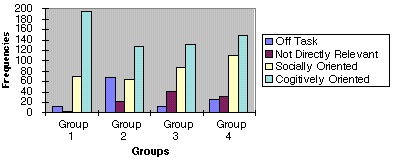
Figure 5: Talk types when using word processing software
| Types of talk (1,10) |
Fgroup (1,10) | Fsoftware (1,10) | Finteraction |
| Off-task Not directly relevant Socially oriented Cognitively oriented |
1.34 1.29 13.07* 0.01 |
13.28* 8.37 249.31** 5.92 |
2.64 0.72 2.24 2.08 |
| *p<0.01 **p<0.001. Because of the large number of F values calculated (24), alpha was set conservatively at 0.01 instead of 0.05 | |||
Although cognitively oriented talk was the most prevalent type of talk for both groups and for both software categories, there was no significant difference at the 0.01 level, in the amount of cognitively oriented talk for the heterogeneous and homogeneous group structures when using the simulation and word processing software, (F(1,10) = 5.92, p = 0.035). Nor was there any significant difference in the frequency of cognitively oriented talk between the heterogeneous and homogeneous group types, (F(1,10) = 0.01, p = 0.915). Table 2 displays the mean frequencies for the types of talk of the two group types when using the two types of software, revealing the high proportion of cognitively oriented talk in relation to the other talk types.
| Simulation | Word processing | |||
|---|---|---|---|---|
| Types of talk | Heterogeneous (n=6) | Homogeneous (n=6) |
Heterogeneous (n=6) | Homogeneous (n=6) |
| Off-task** | 0.83 | 1.33 | 13.00 | 6.00 |
| Not directly relevant | 2.00 | 3.00 | 6.83 | 11.83 |
| Socially oriented* *** | 7.67 | 15.00 | 22.00 | 32.33 |
| Cognitively oriented | 59.17 | 62.17 | 53.33 | 46.67 |
| * Difference between heterogeneous and homogeneous groups, p<0.01 ** Difference between software types by the same group, p<0.01 *** Difference between software types by the same group, p<0.001 | ||||
Of the four types of talk, socially oriented talk was the only category of talk where frequencies differed significantly between group structures, (F(1,10) = 13.07, p = 0.005). The homogeneous groups produced significantly more socially oriented talk than the heterogeneous groups and this occurred regardless of the software used. This is illustrated by the mean frequencies for socially oriented talk for the heterogeneous and homogeneous groups when involved with the two software types (in Table 2) and the corresponding F value (in Table 1). Furthermore, both the heterogeneous and homogeneous groups produced significantly more off-task talk when they were using the word processing software, (F(1,10) = 13.28, p = 0.005), as well as more socially oriented talk when using this software (F(1,10) = 249.31, p<0.001), (see Table 1).
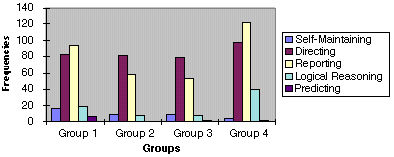
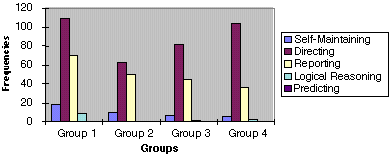
Directing and reporting talk were the most frequently occurring types of cognitively oriented talk for both heterogeneous and homogeneous groups and for both simulation and word processing software. However, there was no significant difference between the directing talk, (F(1,10) = 0.19, p = 0.672) and reporting talk, (F(1,10) = 0.02, p = 0.878) for the heterogeneous and homogeneous groups.
Nor was there a significant difference between the directing talk, (F(1,10) = 0.13, p = 0.728) and reporting talk, (F(1,10) = 3.27, p = 0.101) for the groups, whether students were using word processing or simulation software. Table 3 shows the results for the 2x2 ANOVAs for each type of cognitively oriented talk.
| Cognitively oriented talk (1,10) |
Fgroup (1,10) | Fsoftware (1,10) | Finteraction |
| Self maintaining Directing Reporting Logical reasoning |
6.93 0.19 0.02 0.66 |
0.03 0.13 3.27 13.50* |
0.12 0.00 0.78 2.37 |
| *p<0.01 | |||
Table 4 displays the means for the types of cognitively oriented talk occurring in the two groups when using the two types of software and demonstrates the high proportion of directing and reporting talk in relation to the other types of cognitively oriented talk.
| Simulation | Word processing | |||
|---|---|---|---|---|
| Cognitively oriented talk | Heterogeneous (n=6) | Homogeneous (n=6) |
Heterogeneous (n=6) | Homogeneous (n=6) |
| Self maintaining | 4.00 | 2.00 | 4.50 | 1.83 |
| Directing | 27.17 | 29.17 | 28.33 | 30.67 |
| Reporting | 25.17 | 29.17 | 19.67 | 15.50 |
| Logical reasoning** | 4.33 | 7.83 | 1.33 | 0.50 |
| ** Difference within software types by the same group, p<0.01 | ||||
Data analysis also found that students of both the heterogeneous and homogeneous groups used significantly more logical reasoning talk when they were working with simulation than with word processing software, (F(1,10) = 13.50, p = 0.004). However, there was found to be no significant difference between the frequencies of use of logical reasoning talk for the heterogeneous and homogeneous groups, (F(1,10) = 0.66, p = 0.436).
The largest proportion of students' talk across both group and software types was cognitively oriented. However, there were variations in the quantities of cognitively oriented talk between software types. When working with simulation software, 81% of students' talk was cognitively oriented (see Figure 8), whilst for the word processing software there was a marked drop in this figure, to 52% of the total talk produced (see Figure 9). There was found to be no significant difference in the amount of cognitively oriented talk produced between the heterogeneous and homogeneous groups, or between these groups when involved with the two different software types - thus, it would appear not to matter in this instance whether students are grouped heterogeneously or homogeneously.
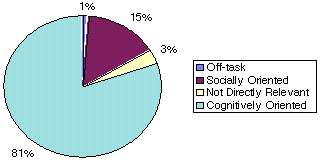
Figure 8: Percentages of students' talk types using simulation software
This lends support to Bennett & Dunne (1991), who found that students working on tasks involving computers produced a high proportion of cognitively oriented talk (77%). Furthermore, as indicated in Nastasi and Clements (1993), the high proportion of cognitively oriented talk together with the small quantity of off-task talk found in this study, suggests computer use can exercise a strong motivational influence on students' involvement in cooperative CAL.
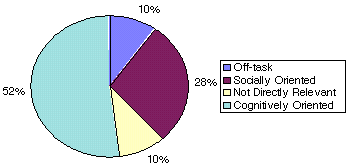
Figure 9: Percentages of students' talk types using word processing software
What types of cognitive talk are generated amongst students when working within cooperative groups using CAL?
It was found that students in both the heterogeneous and homogeneous groups when involved with either simulation or word processing software used predominantly directing and reporting language. However, the tasks set and the software used probably placed unforeseen limitations on the types of language necessary to undertake the tasks. For example, when working with the simulation students understandably used more exploratory language to arrive at choices through discussion, (i.e. logical reasoning, predicting, projecting and imagining language). Again, the word processing task found students in the heterogeneous and homogeneous groups using very little logical reasoning talk, whilst for the simulation task, students in the two group structures were found to use logical reasoning talk more frequently. The tasks relating to the two software types were different and, whilst the simulation task often required students to logically substantiate choices (e.g:
| H: | Cloth, and we want 5. |
| I: | We need to sell something because we haven't got a lot of money. |
| H: | We've got 510 left. Two is 100. The cloth isn't that dear, so we'll get 50. |
| I: | Sell I think.), |
the word processing task precluded a greater use of logical reasoning talk since students were required to concentrate on reporting factual information.
That the talk in this study was found to be predominantly characterised by the language of reporting and directing, further supports the Bennett & Dunne (1991) thesis, that CAL often involves a high degree of action talk. Action talk is the talk of students when they are manipulating something and would include reporting and directing. Such talk is representative of lower-order cognitive processing; when action talk begins, abstract, or higher levels of talk, tend to cease (Bennett & Dunne, 1991).
Students also experienced relatively high levels of self-maintaining talk when working with both software types, regardless of group structure. Through such talk students can be said to have been placing importance on their individual choices and to be protecting these against manipulation by others. In a cooperative group activity, it would be desirable for this type of talk to be minimal. Limited experience in working cooperatively hinders students' confidence in their peers and results in higher levels of self-maintaining talk; in this context, it is suggested that students will not share a task effectively and consequently, the exchange of complex information will be severely curtailed (Meloth & Deering, 1994). This highlights the importance of explicitly addressing cooperative skills prior to establishing cooperative CAL groups in everyday classrooms.
Although students in this study produced relatively large amounts of cognitively oriented talk, they were engaged mainly in lower-order processing. For example, regardless of group structure or software used, students used very limited amounts of predicting and imagining talk, and no projecting talk - it is these types of talk that are indicative of higher-order cognitive processing (Vockell & Van Deusen, 1989; Woolever, 1987). Furthermore, as Tough (1976) alludes to a progressively more complex language type as one moves along his framework (see Figure 2), it can be seen that students in the study produced mainly low levels of talk. As language can be taken to be an expression of cognition (Woolever, 1987) it is suggested that these students were using only limited higher-order cognitive processing for both software activities.
How does students' talk vary in relation to group structure?
In this study, the types of talk for the students in the two group structures, heterogeneous and homogeneous, were found to vary, although only one type of talk was found to vary significantly between the group structures. Students in the homogeneously structured groups produced more socially oriented talk for both software activities than those of the heterogeneous groups. The example presented here illustrates one student endeavouring to draw guidance from others in the correct use of punctuation.
| A: | Oh wait. That's a sentence. |
| C: | I know, a full stop. Is that a full stop? |
| A: | Shift. Yes, full stop. |
| C: | Is that it? |
| B: | No, that's - full stop, I think. |
| C: | Here. No. |
| A: | That's not it. Oh yes it is. Press shift. |
| C: | Oh no. Delete. You don't have to press shift. |
Socially oriented talk is important in building roles and relationships between the students within their groups; the development of peer teaching and trust develops through social talk. In producing more socially oriented talk it would appear that homogeneously grouped students gave more emphasis to the development of the working structure of the group, attempting to build a more cooperative climate; indeed, this reflects similar findings elsewhere (Bennett & Dunne, 1991; Cummings, 1985; Meloth & Deering, 1994). It was also apparent that the heterogeneous groups in this study produced less socially oriented talk partly due to the dominance of high ability students. In one of the two heterogeneous groups, the high ability student was often abrupt in telling the other students what to do, or in making a choice for the group without any discussion. For example:
| D: | No, we've already read this. [Moved to the next screen without further consultation with the other group members]. What did it say when it said find extra crew members? |
This student assumed that the other group members did not need to read the screen because he felt he knew the information it held - he was unforgiving of those less able than himself. In the other heterogeneous group, the high ability student was more gentle in approach and inquiring of the other students, but still played a directing and uncompromising role. For example:
| A: | Buy something, sell something, finish trading. [Reading from the screen]. Which one? Do you want to buy something, sell something or finish trading? Finish. Do you want to buy something? |
| B: | Get cargo. |
| A: | What one do you want to buy? Choose item 1 to 5. Which one do you want to buy? |
| B: | Gold, silver, spices. Um. |
| A: | Gold. |
From such dialogue, it would seem that the social structure of the heterogeneous groups was dominated by high ability students. Hooper and Hannafin (1989) and Nastasi & Clements (1993) have reported the potential to gain from socialisation and verbal interaction is higher for heterogeneous groups working cooperatively in CAL. However, whilst both these studies were structured differently to this one, the results here do not support their findings in this matter. Indeed, the homogeneous groups appear to have been more successful in their attempts to develop their social structure in an endeavour to involve all students.
How does students' talk vary in relation to software type?
There was found to be greater variation in the amount and quality of talk within the same groups over different software, rather than between the groups. For example, the use of simulation software produced a greater amount of logical reasoning talk, where students occasionally gave reasons why a particular action should be taken, for example:
| J: | Yes, yes. 'Cause we don't have enough money to last the journey. |
| L: | No, we're going to GET spices. So why do we need spices? |
| J: | 'Cause there might be some bad men on the thing and want to keep it for themselves. |
| K: | Yes. |
| J: | They'd get the gold and take it away. So cloth - we should get just some cloth. |
Evidently, the nature of the software task here influenced the greater amounts of logical reasoning talk produced. In the word processing activity students were required to present factual information, rather than to rationalise. Certainly, then, the use of different software can be expected to produce variations in talk, as others have also suggested (Crook, 1990; Light & Mevarech, 1992). However, in the final analysis, it is the task design that is of influence in determining talk; sometimes this is inherent in the software, whilst for other cases, the task is set by the teacher (or perhaps by the student). Indeed, in investigating the necessary circumstances for successful groupwork, Hoyles et al., appear to agree that task design and software type are strong determinants (Hoyles, Healy, & Pozzi, 1994).
The off-task talk was minimal while students were involved with the simulation task. However, when students were working on the word processing activity, their off-task talk increased markedly. The word processing software appeared not to direct the students' thoughts, whereas the task required them to become involved in discussion. Arguably, this discussion often reflected the students' limited ability to stay fully on-task when their actions were not directed by the software. Certainly, where tasks are not implicit in the software, as with word processing, students need to expend a greater amount of talk exploring the limits of the task as well as their responses to it.
Of concern is the action or low level talk produced by the students in the heterogeneous and homogeneous groups when using CAL. Certainly, it is a mistake to expect the introduction of a computer to make, by itself, a difference to the quality of students' talk or indeed, to their learning (Clark, 1994). It may even be that the introduction of a computer leads to poorer quality talk and thinking, particularly if not planned for carefully. It is evident that in planning computer-based activities, tasks should be set that anticipate the language students may be expected to use when undertaking work in a cooperative group structure. In this planning, an emphasis needs to be placed on encouraging students to use higher levels of language, which would indicate higher levels of cognitive processing. Also, with explicit teaching of cooperative group skills, students may be expected to interrelate more effectively, thereby reducing the quantity of lower-order talk.
Further research into the talk generated by students when involved with computers and working in cooperative groups, should encompass a greater variety of software. This study examined only two specific software types. Furthermore, the academic and social development of the same students over a longer period of time may illustrate variations in the students' talk not revealed in this study.
Bennett, N., & Dunne, E. (1991). The nature and quality of talk in cooperative classroom groups. Learning and Instruction, 1, 103-118.
Carrier, C. A., & Sales, G. C. (1987). Pairs versus individual work on the acquisition of concepts in a computer-based instructional lesson. Journal of Computer-Based Instruction, 14(1), 11-17.
Clark, R. E. (1994). Media will never influence learning. Educational Technology Research and Development, 42(2), 21-29.
Clements, D. H., & Nastasi, B. K. (1988). Social and cognitive interactions in educational computer environments. American Educational Research Journal, 25(1), 87-106.
Crook, C. (1990). Computers in the classroom. In O. Boyd-Barrett & E. Scanlon (Eds.), Computers and Learning (pp. 155-173). Wokingham, England: Addison-Wesley.
Cummings, R. (1985). Small group discussions and the microcomputer. Journal of Computer Assisted Learning, 1(3), 149-158.
Dalton, D. W., Hannafin, M. J., & Hooper, S. (1989). Effects of individual and cooperative computer-assisted instruction on student performance and attitudes. Educational Technology Research and Development, 37(2), 15-24.
Eraut, M., & Hoyles, C. (1989). Groupwork with computers. Journal of Computer Assisted Learning, 5(1), 12-24.
Evans, J. (1994). Oral language developmental continuum. Perth: Longman Cheshire.
Groundwater-Smith, S. (1993). Beyond the individual: Collaborative writing and the microcomputer. In M. Monteith (Ed.), Computers and language. Oxford: Intellect.
Halliday, M. A. K. (1988). Spoken and written language. Victoria: Deakin University Press.
Hooper, S. (1992). Cooperative learning and computer-based instruction. Educational Technology Research and Development, 40(3), 21-38.
Hooper, S., & Hannafin, M. J. (1988). Cooperative CBI: The effects of heterogeneous versus homogeneous grouping on the learning of progressively complex concepts. Journal of Educational Computing Research, 4(4), 413-424.
Hooper, S., & Hannafin, M. J. (1991). The effects of group composition on achievement, interaction, and learning efficiency during computer based cooperative instruction. Educational Technology Research and Development, 39(3), 27-40.
Hoyles, C., Healy, L., & Pozzi, S. (1994). Groupwork with computers: An overview of findings. Journal of Computer Assisted Learning, 10(4), 202-215.
Hunt, N., & Alford, L. (1992). Involving students in computer based cooperative lessons. The Computing Teacher, 19(4), 34-37.
Jacob, T., & Vellios, J. (1989). Terra Australis, voyage of trade and discovery. Milton, Queensland: Jacaranda.
Johnson, D. W., & Johnson, R. T. (1986). Computer-assisted cooperative learning. Educational Technology, January, 12-47.
Johnson, D. W., & Johnson, R. T. (1989). Cooperation and competition: Theory and research. Edina, MN: Interaction Book Company.
Johnson, D. W., Johnson, R. T., & Maruyama, G. (1983). Interdependence and interpersonal attraction among heterogeneous and homogeneous individuals: A theoretical formulation and a meta-analysis of the research. Review of Educational Research, 15, 5-54.
Johnson, R. T., Johnson, D. W., & Stanne, M. B. (1985). Effects of cooperative, competitive, and individualistic goal structures on computer assisted instruction. Journal of Educational Psychology, 77(6), 668-677.
King, A. (1989). Verbal interaction and problem-solving within computer-assisted cooperative learning groups. Journal of Educational Computing Research, 5(1), 1-15.
Laurillard, D. (1992). Learning through collaborative computer simulations. British Journal of Educational Technology, 23(2), 164-171.
Light, P. H., & Mevarech, Z. R. (1992). Cooperative learning with computers: An introduction. Learning and Instruction, 2, 155-159.
McMahon, H. (1990). Collaborating with computers. Journal of Computer Assisted Learning, 6, 149-157.
Meloth, M. S., & Deering, P. D. (1994). Task talk and task awareness under different cooperative learning conditions. American Educational Research Journal, 31(1), 138-165.
Mercer, N. (1994). The quality of talk in children's joint activity at the computer. Journal of Computer Assisted Learning, 10, 24-32.
Peterson, P. L., Janicki, T. C., & Swing, S. R. (1981). Ability X treatment interaction effects on children's learning in large-group and small-group approaches. American Educational Research Journal, 18(4), 453-473.
Schwartz, H. J., Van der Geest, T., & Smit-Kreuzen, M. (1992). Computers in writing instruction. International Journal of Educational Research, 17(1), 37-50.
Sherwood, C. (1990). Computers and higher order thinking skills. In A. McDougall & C. Dowling (Eds.), Proceedings of the IFIP TC Fifth world Conference on Computers in Education - WCCE 90, (pp. 1081-1086). Sydney, Australia: North Holland: Elsevier Science Publishers B.V.
Sigel, I. E., & Cocking, R. R. (1977). Cognitive development from childhood to adolescence: A constructivist perspective. New York: Holt, Rinehart and Winston.
Signer, B. R. (1992). A model of cooperative learning with intergroup competition and findings when applied to an interactive video reading program. Journal of Research on Computing in Education, 25(2), 141-158.
Snyder, I. (1994). Writing with word processors: The computer's influence on the classroom context. Journal of Curriculum Studies, 26(2), 143.
Swing, S. R., & Peterson, P. L. (1982). The relationship of student ability and small-group interaction to student achievement. American Educational Research Journal, 19(2), 259-274.
Tough, J. (1976). Listening to children talking: A guide to the appraisal of children's use of language. Cardiff: Ward Lock Educational.
Vockell, E., & Van Deusen, R. M. (1989). The computer and higher-order thinking skills. Watsonville, CA: Mitchell Publishing.
Watson, D. M. (Ed.). (1993). Impact, the report. An evaluation of the impact of information technology on children's achievements in primary and secondary schools. London: Department for Education and King's College, London.
Webb, N. M. (1982). Student interaction and learning in small groups. Review of Educational Research, 52(3), 421-45.
Webb, N. M., Ender, P., & Lewis, S. (1986). Problem-solving strategies and group processes in small groups learning computer programming. American Educational Research Journal, 23(2), 243-261.
Woolever, R. M. (1987). A new framework for developing classroom questions. Social Education, 51(6), 407-410.
| Author: Martyn Wild is lecturer in the Multimedia Learning Technologies at Edith Cowan University, WA. He has published in diverse fields of educational computing research. including effective models of computer use n pre- and in-service teacher education. cognitive modeling, the use of interactive multimedia to support cognitive performance. and human-computer interaction. Current research involves developing multimedia performance support systems for tertiary students undertaking complex tasks. investigating the impact of distributed information systems on literacy and the quality and type of talk generated by young computer users.
Please cite as: Wild, M. (1995). Analysing children's talk in computer-based cooperative groups. Issues In Educational Research, 5(1), 85-104. http://www.iier.org.au/iier5/wild.html |
© 1995 Issues in Educational Research
Last revision: 26 Oct 2013. This URL: http://www.iier.org.au/iier5/wild.html
Previous URL: http://education.curtin.edu.au/iier/iier5/wild.html
Previous URL from 21 Dec 1997 to 2 Aug 2001: http://cleo.murdoch.edu.edu.au/gen/iier/iier5/95p85.htm
HTML : Clare McBeath [c.mcbeath@bigpond.com] and Roger Atkinson [rjatkinson@bigpond.com]